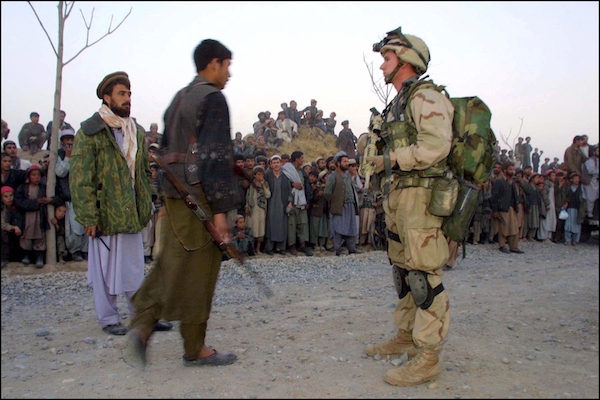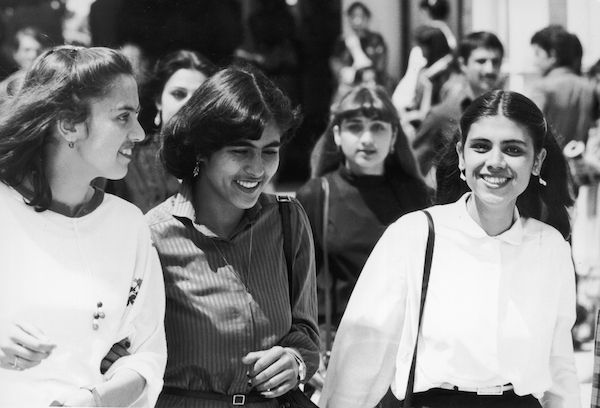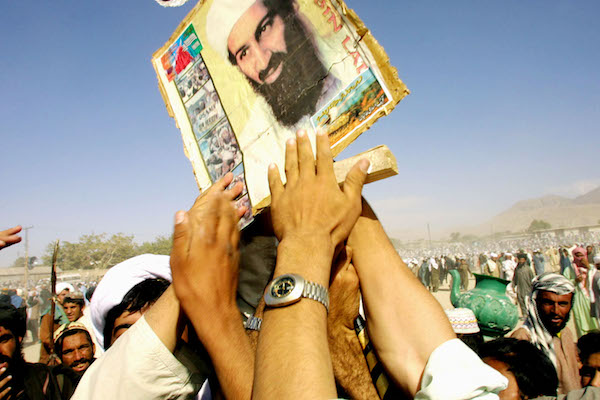
A brief summary of the war in Afghanistan
Last Saturday, President Donald Trump announced that he was “calling off” the negotiations with Taliban leaders on an alleged peace in Afghanistan. How did we…
One of the most arduous promises of the Trump campaign was always to withdraw U.S. troops from long-standing conflicts.
The slogan was always "let others fight their own wars."
However, the conflict in Afghanistan - the product of the events of September 11, 2001 - was not so easy to resolve.
After 18 years of bloody clashes against Taliban forces in the country, the Trump administration seemed ready to reach an agreement and withdraw from the territory.
A secretly planned meeting with Taliban guerrilla fighters and the current government's leaders - including President Ashraf Ghani - was intended to commemorate 18 years since the World Trade Center attack with an alleged peace agreement.
An attack in Kabul last Thursday at the hands of the Taliban guerrillas caused Trump to suspend the meeting and throw away more than 10 months of talks.
Unbeknownst to almost everyone, the major Taliban leaders and, separately, the President of Afghanistan, were going to secretly meet with me at Camp David on Sunday. They were coming to the United States tonight. Unfortunately, in order to build false leverage, they admitted to..
— Donald J. Trump (@realDonaldTrump) September 7, 2019
After the 9/11 attacks, the government of George W. Bush demanded the government of Afghanistan hand over the leader of the al-Qaeda terrorist group, Osama bin Laden, to be prosecuted in the country.
Kabul's refusal argued that there was no evidence of bin Laden's involvement in the attack, which triggered an allied invasion of Afghanistan on October 7.
Under the name "Operation Enduring Freedom,” the United States and the United Kingdom leveled an attack against the country's Taliban government, whose sovereignty was questioned after the Afghan civil war.

While the Bush-Chenney political campaign caused the entire world to associate the word "Taliban" with terrorism, very few know the origin of this group in history.
Until 1973, the regime of King Zahir Shah and Prime Minister Daoud Khan had almost completely modernized Afghanistan, distancing the government from the Islamist creed and even allowing the emancipation of women.
But the threat of a developed Arab country was a blow to old repressive systems anchored in the region, especially in countries like Pakistan.
The violent coup d'etat of 1973 that overthrew Shah and Daoud Khan gave way to a bloody internal conflict sponsored by Pakistan and driven by radical Islamist groups, who were confronted by the communist party and cells of the Soviet government that intervened in the affair.

The argument of the winners of World War II was always to fight against communism and the establishment of socialist systems around the world.
Conflicts in Cuba and Vietnam were just some examples of that.
But Afghanistan had its dose of ideological battles fought at a distance.
During much of the 80s, the United States, Pakistan, Saudi Arabia, and China injected billions of dollars to help the rebels who were fighting against the Afghan government established with the help of the Soviet Union.

Although the new government of the Democratic Republic of Afghanistan was established in much of the country, the rural regions were connected by radical Islamist groups - mujahideen, or "soldiers of the Holy War."
In collaboration with the government of Pakistan, the CIA provided funds and facilitated the training of thousands of Islamist guerrillas to overthrow the Afghan government established by the Soviet Union.
Operation Cyclone - one of the largest operations ever carried out by the agency - gave the so-called "Islamist Afghans" all the training necessary to become one of the most dangerous cells in the world.
One of the volunteers to join that training was Osama bin Laden.
The fall of the Soviet regime and the withdrawal of forces and funds from Afghanistan caused the United States to lose interest in the region and left the rebels equipped to sustain the now Islamic State government.
RELATED CONTENT
But in a headless country, everyone rushed for power, including cells with radical ideologies like those of Mohammed Omar, a mujahideen fighter who returned to the country to form the Taliban movement.
With a line of strict adherence to Islamic Law, Omar gathered enough supporters to create a militia and advanced to the capital in 1995. With the help of Pakistan and Saudi Arabia, they founded the Islamic Emirate of Afghanistan and destroyed what little progress and modernization that the country achieved prior.
Between 1996 and 2001, the United Nations estimated around 15 massacres carried out by the Taliban against the Northern Alliance that tried to maintain some control in the country.
One of the most aggressive brigades was the 055, to which Osama bin Laden belonged.
Having joined Omar in 1996, and having founded al-Qaeda during his time as a guerrilla, bin Laden moved to eastern Afghanistan where he trained up to 20,000 radicalized volunteers called "jihadists."

The focus of the Holy War carried out by radicalized groups then turned to U.S. interference, resulting in attacks against embassies in 1998 and a resolution by the United Nations Security Council to catch and control the now-threatening bin Laden.
In August 2001, President George W. Bush agreed to support the Northern Alliance in Afghanistan and provide support to its leader, Ahmad Shah Massoud, against the Taliban regime.
The Taliban killed Massoud in a suicide attack on September 9, 2001.
Two days later, 19 men of Arab origin - of whom 15 came from Saudi Arabia - coordinated the tragic attack against the World Trade Center in the United States.
After the Taliban regime refused to hand over Osama bin Laden, the United States invaded Afghanistan with 60,000 troops.
"We did not ask for this mission, but we will fulfill it," President George W. Bush said in announcing the first airstrikes.
The mission was to "disrupt the use of Afghanistan as a terrorist base of operations and to attack the military capability of the Taliban regime."
A regime forged by hand by the U.S. government during the Cold War.
Although the efforts of the United States succeeded in putting a new government in command of Afghanistan in 2004, the Taliban guerrillas remain largely uncontrollable, especially in the border area with Pakistan, where they have established their own drug trafficking and mining routes, according to a BBC report.
NATO forces finally left the territory in 2014, and today the Taliban control 70% of the country.











LEAVE A COMMENT: